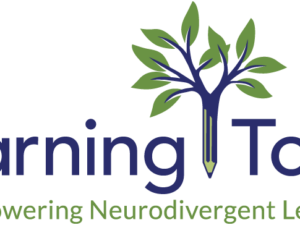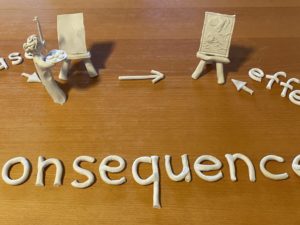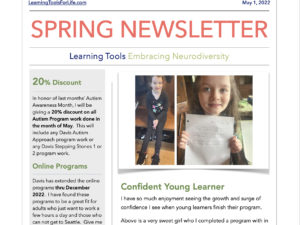
The other day, a student of mine was telling me how he was really nervous about coming to yet another dyslexia reading program/tutoring. He said in the past he always got so tired of them and disappointed with himself. He would feel like he was progressing when he was there with a tutor but the minute he was home he forgot it and would have to go relearn it all again. So he was so excited that when he came to Learning Tools, it was fun AND memorable; he didn’t have a hard time at all telling his mom about his day. He suggested I write a bit about what a day is like and post it on my website so other students could read so they would have more of an idea of what to expect. Great idea I thought, but I wanted his help so I could see what parts of the days were really memorable. Turns out, most of it was!!
Below is Jamie’s account of the day:
- Start off the morning with a check-in, how we are feeling about being there, did we sleep well, do we need a snack or to do some stretching – make sure we are set up to be successful for the day.
- Then we take time to check and make sure our focusing tools is where it needs to be and do any fine tuning if need be. This is as easy as 1,2,3, balance.
- Then we play around with koosh balls (a type of rubbery stringy ball). From there we are really focused and ready to do some reading.
- We only read for 5-10 minutes depending on how one is feeling. When we work on reading comprehension it might be longer and a good discussion of “the movie” that we have visualized while reading.
- Next, we would do clay work to master words. We talk about the “trigger words”, look it up in a dictionary (it is amazing to see how many different meaning one of these words can have), make all kinds of sentences until that word is really clear to us, then we get to create a model of the word in clay. Creativity is welcome here, but simple models work great. So for the word “on”, while Sophia modeled a child who rode “on” the camel, I modeled a boy flew “on” the plane. This was a bit more challenging then I had thought it would be – but I was happy with the model in the end. {“on” definition used “used as a function word to indicate means of transport“}
- Then we take a break, maybe a 10 minutes break, maybe 15 – just depends on what we together think is needed. “I love how I get to help make the decisions, ‘it is your program, after all, Sophia says’.
- We end our break with koosh balls or start our work session, however, you prefer to think of it. Koosh balls help to ensure we are focused and ready for the next task at hand.
- When we get back to work, we often do another reading exercise. If not reading, we work on spelling words; we tackle another spelling word that has given me trouble in the past. Using the tools, making the word in clay, and then mastering has me spelling the word in no time! The best part is, I remember the word.
- We continue the day in this pattern. The day goes by fast actually, and while it is work, it doesn’t feel like work. The best part was each day I felt proud of the models I did and surprised by how much working with the word helped me, I don’t have problems with these words anymore when I am reading or trying to write and spell them – weird but true.

Clay model showing the meaning of “always” (at all times) done during the Dyslexia Correction Program.





